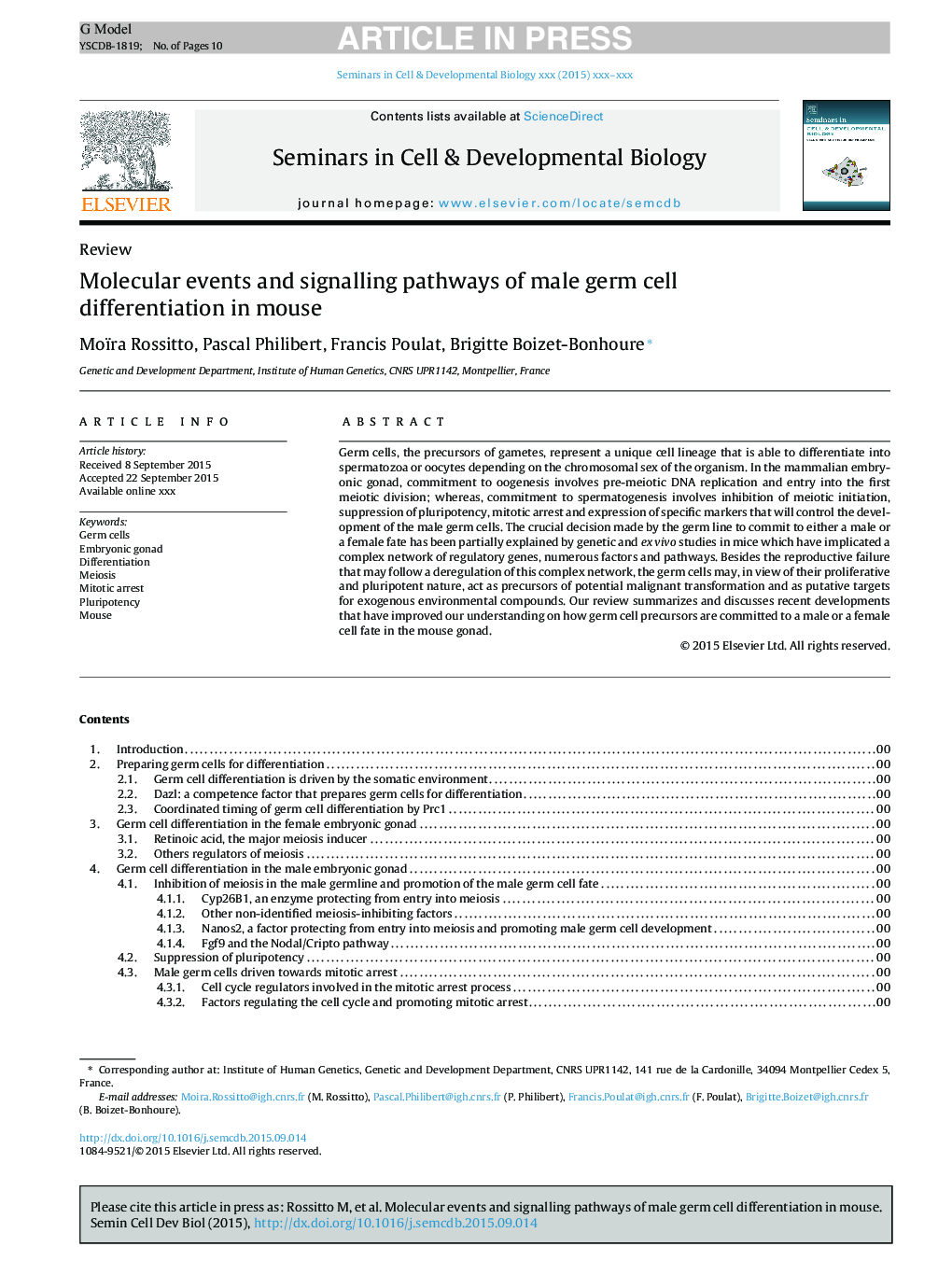| Article ID | Journal | Published Year | Pages | File Type |
|---|---|---|---|---|
| 8480303 | Seminars in Cell & Developmental Biology | 2015 | 10 Pages |
Abstract
Germ cells, the precursors of gametes, represent a unique cell lineage that is able to differentiate into spermatozoa or oocytes depending on the chromosomal sex of the organism. In the mammalian embryonic gonad, commitment to oogenesis involves pre-meiotic DNA replication and entry into the first meiotic division; whereas, commitment to spermatogenesis involves inhibition of meiotic initiation, suppression of pluripotency, mitotic arrest and expression of specific markers that will control the development of the male germ cells. The crucial decision made by the germ line to commit to either a male or a female fate has been partially explained by genetic and ex vivo studies in mice which have implicated a complex network of regulatory genes, numerous factors and pathways. Besides the reproductive failure that may follow a deregulation of this complex network, the germ cells may, in view of their proliferative and pluripotent nature, act as precursors of potential malignant transformation and as putative targets for exogenous environmental compounds. Our review summarizes and discusses recent developments that have improved our understanding on how germ cell precursors are committed to a male or a female cell fate in the mouse gonad.
Related Topics
Life Sciences
Biochemistry, Genetics and Molecular Biology
Cell Biology
Authors
Moïra Rossitto, Pascal Philibert, Francis Poulat, Brigitte Boizet-Bonhoure,
